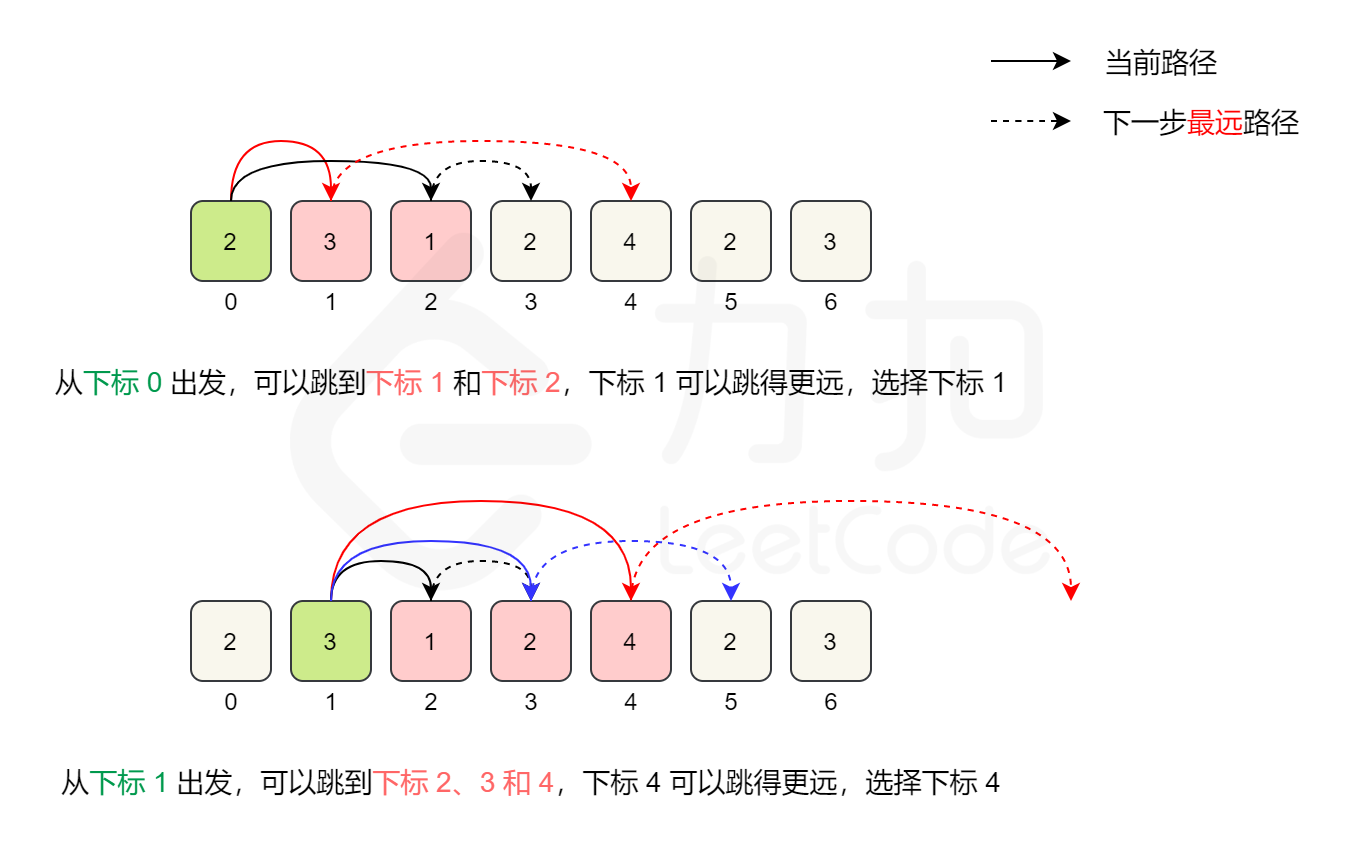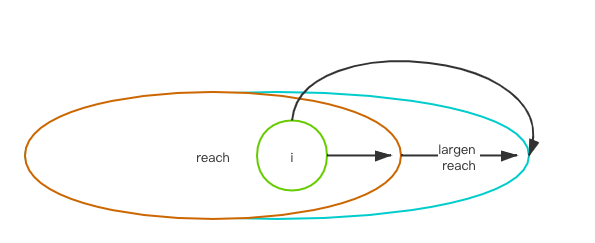[45] Jump Game II
Given an array of non-negative integers, you are initially positioned at the first index of the array.
Each element in the array represents your maximum jump length at that position.
Your goal is to reach the last index in the minimum number of jumps.
贪心算法, 局部解得到最优解.
解题思路: 每次查找当前位置能够到达的位置中, 能跳到最远位置的位置A, 下次就跳到位置A, 然后再从位置A能到达的位置中, 再找能跳到最远位置的位置, 如此循环.
但是官方解答虽然简洁, 但是我不是看的很明白, 还是暂时先贴自己的直白解法吧.

1 | // 对于当前index, 每次在能跳到的范围内 |
[55] Jump Game
Given an array of non-negative integers, you are initially positioned at the first index of the array.
Each element in the array represents your maximum jump length at that position.
Determine if you are able to reach the last index.
一开始尝试使用递归做法, 计算所有的可能性, 但是想也不是最好的解法, 最后很可能超时, 果不其然超时.
于是就去看网上解法, 这里的考点是贪心算法.
贪心算法(又称贪婪算法)是指,在对问题求解时,总是做出在当前看来是最好的选择。也就是说,不从整体最优上加以考虑,算法得到的是在某种意义上的局部最优解
该题的大概思路是:
数组的第一个元素的值为 reach, 从数组的第一个元素开始, 每次计算在reach范围内的元素们所能到达的最远距离, 是否超过reach, 如果超过了, 就更新reach值为较大值. 直至reach的值超过lastIndex 返回 true.

1 | /** |